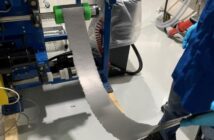Carbon Dioxide is the topic of many discussions nowadays and not in any way that could be positive. We have done our fare share of discussing the effects of it in regards to Climate Change. However, today we are talking about a different form of carbon, one that is used in batteries, under hopefully a better light.
Carbon as Lampblack
Carbon in the form of lampblack has been used in the negative mass of lead-acid batteries since the earliest days of mass production. In recent years the research into beneficial effects of carbon in various forms has been remarkable. As a result from the two derivatives of lampblack (Soot) and graphite, we now have a much wider range of forms to include nano-particles and potentially superconducting graphene structures. Within the broad categories, there are subtle variations that manufacturers use to tease out better performances for different battery properties. The current focuses of the carbon additives are broadly:
- CNT carbon nanotubes
- Graaphene tubes
- Nanoparticles
- Graphene
- Lampblack
The Different Effects of Carbon
Although there are several carbon structures and many claimed benefits to lead-acid battery performance, most of these are derived from just two effects. The first being the improved electrical conduction at low states of charge and the second is the crystal size of the AM. We get better AM utilization results from a finer grain size whilst the improved charge acceptance and cycle life under PSoC conditions result from better AM conduction.
Additionally, there is a third effect based on so-called fullerene structures. “The fullerenes are a large class of allotropes [forms]of carbon and are made of balls, ‘cages’ or tubes of carbon atoms. Buckminster fullerene is one type of fullerene. Its molecules have 60 carbon atoms arranged in a hollow sphere” (BBC).
For carbons other than graphene, the outer sp3 orbitals are involved in the atomic bonding in solid carbon. Graphite is made up of monoatomic layers of sp2-bonded atoms, which give the familiar honeycomb structure that results from a four-valent atom having three neighbors. The single atomic sheet called graphene has a near perfect structure with almost zero defects. This defect-free structure gives rise to enhanced electron mobility and therefore electronic conduction. The single graphene sheet can be modified to provide a buckyball or nanotube structure. The latter being the subject of considerable research for lead-acid applications.
Thanks for reading! Are you enjoying our posts about carbon? Let us know in the comments below!
Related:
Carbon Additives: All You Ever Wanted to Know




